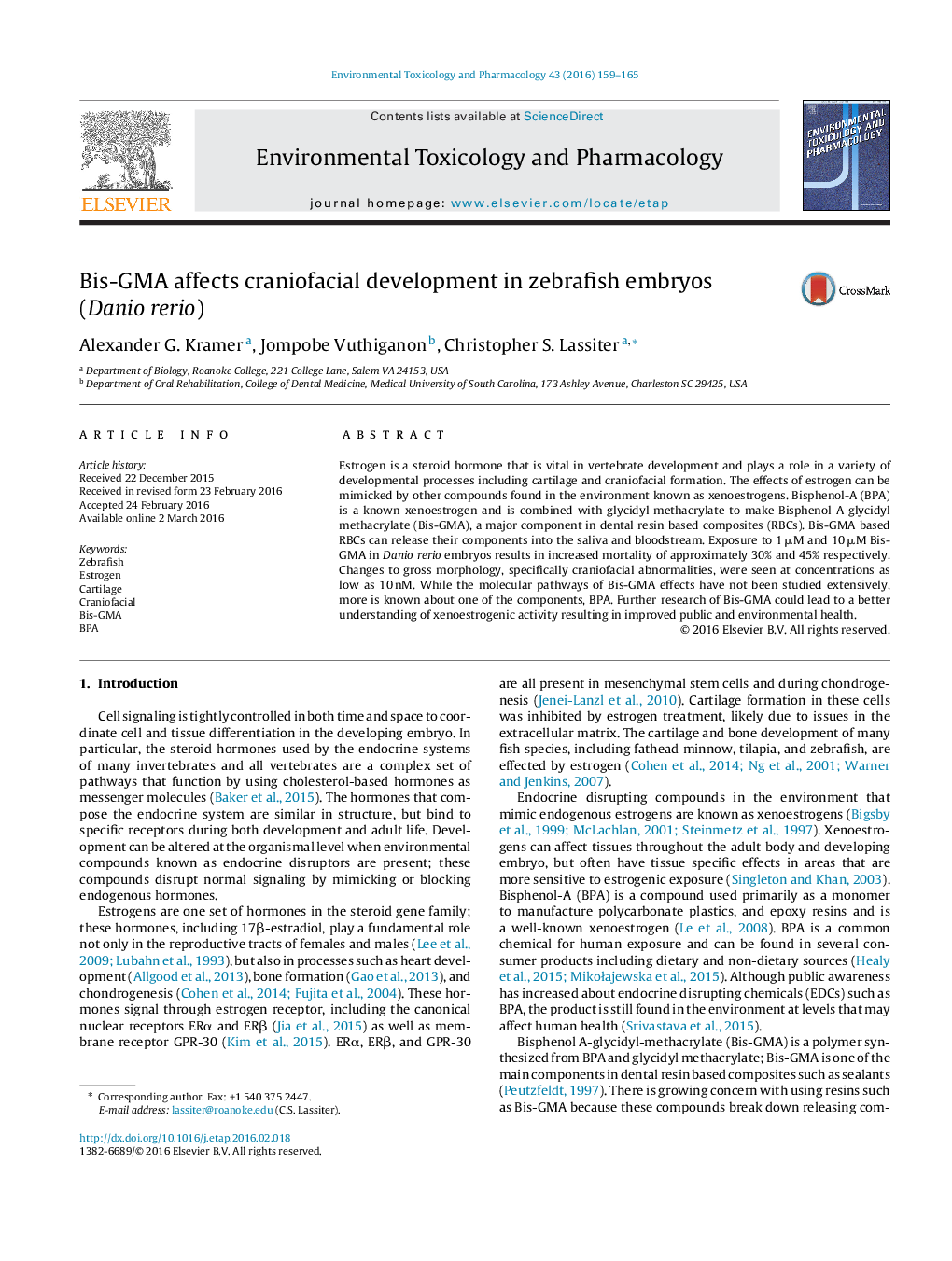| Article ID | Journal | Published Year | Pages | File Type |
|---|---|---|---|---|
| 2582764 | Environmental Toxicology and Pharmacology | 2016 | 7 Pages |
•We expose zebrafish embryos to Bis-GMA, a compound found in dental resins.•Bis-GMA results in subtle disruption of cartilage formation in the jaw.•Bis-GMA also causes gross morphological defects at higher concentrations.•This study assists in understanding the etiology of craniofacial defects.
Estrogen is a steroid hormone that is vital in vertebrate development and plays a role in a variety of developmental processes including cartilage and craniofacial formation. The effects of estrogen can be mimicked by other compounds found in the environment known as xenoestrogens. Bisphenol-A (BPA) is a known xenoestrogen and is combined with glycidyl methacrylate to make Bisphenol A glycidyl methacrylate (Bis-GMA), a major component in dental resin based composites (RBCs). Bis-GMA based RBCs can release their components into the saliva and bloodstream. Exposure to 1 μM and 10 μM Bis-GMA in Danio rerio embryos results in increased mortality of approximately 30% and 45% respectively. Changes to gross morphology, specifically craniofacial abnormalities, were seen at concentrations as low as 10 nM. While the molecular pathways of Bis-GMA effects have not been studied extensively, more is known about one of the components, BPA. Further research of Bis-GMA could lead to a better understanding of xenoestrogenic activity resulting in improved public and environmental health.
